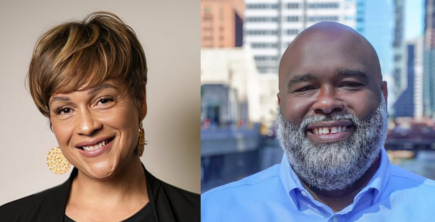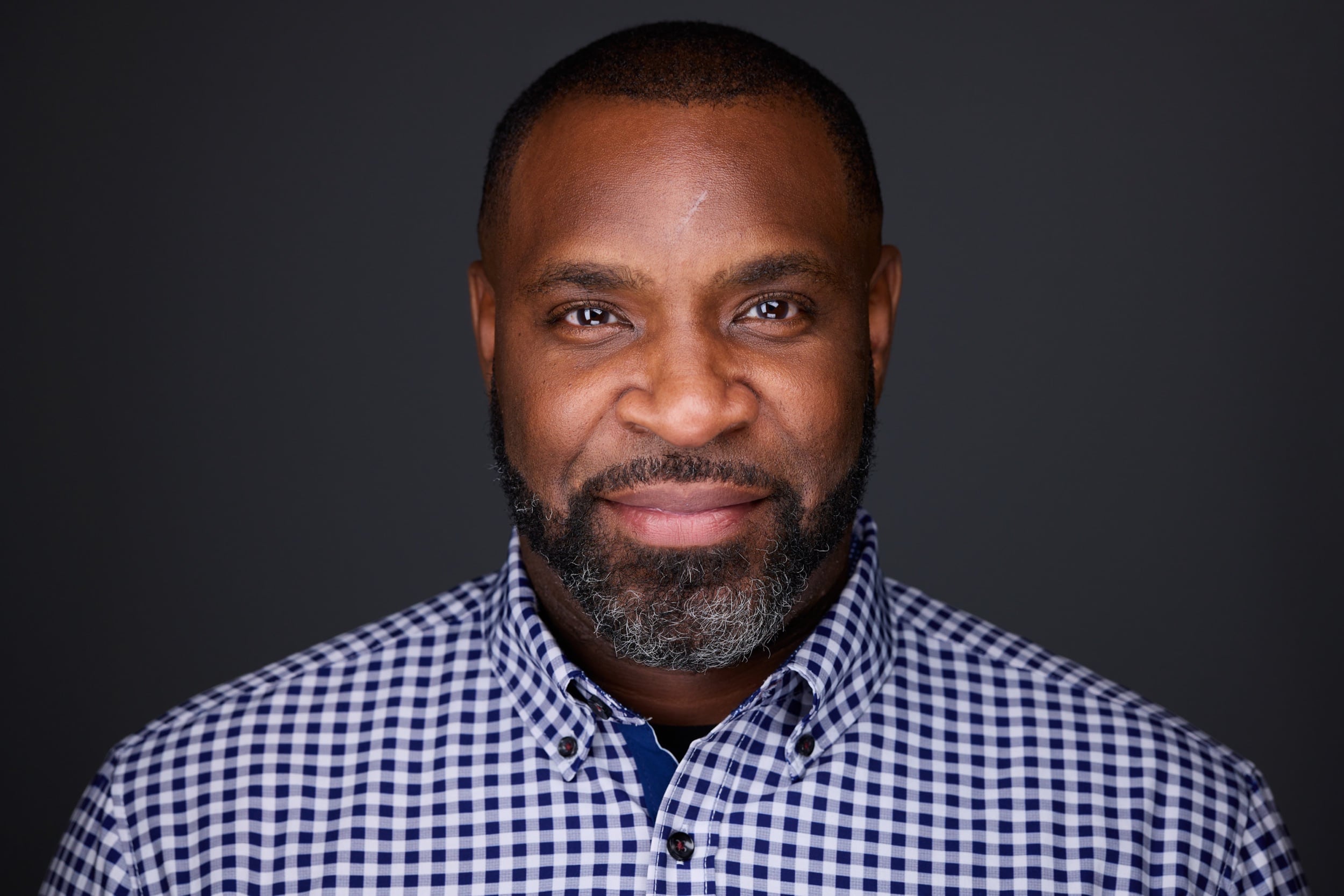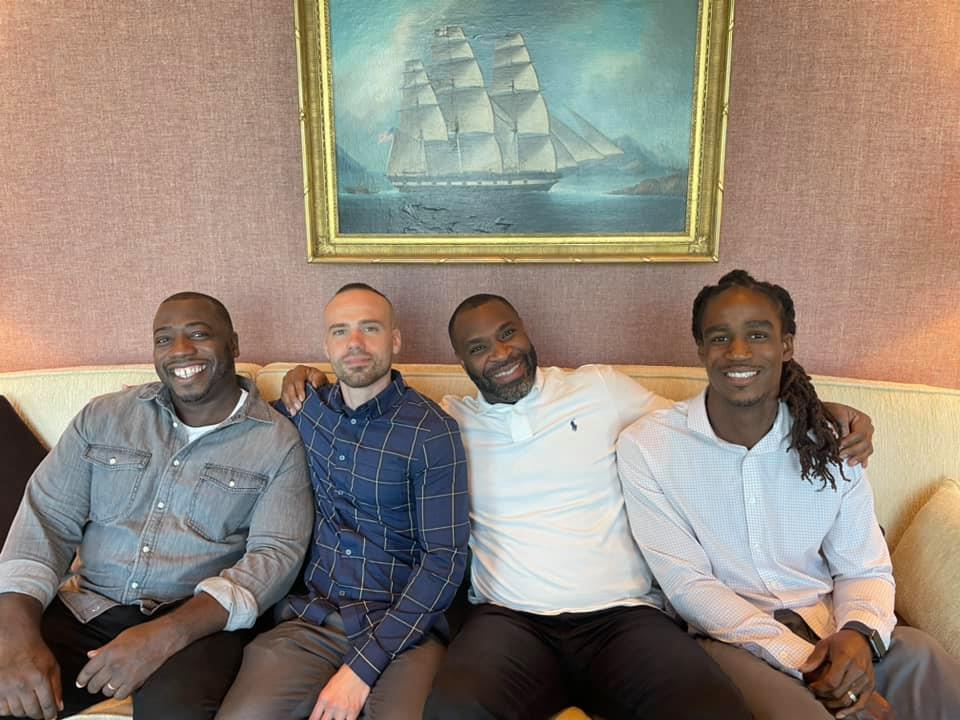
Our Community

“Restorative justice changed and saved my life, and totally reversed my trajectory,” said Armand Coleman while describing his path to becoming a restorative justice practitioner. Today, he leads restorative justice programming as the executive director of the Transformational Prison Project (TPP). The organization is committed to healing individual and systemic harms, particularly violence that has been committed against Black and Brown communities.
In this candid interview, Coleman discusses how restorative justice focuses on healing rather than punishment. Moreover, he discusses how TPP, a Tides Center fiscally sponsored project, applies the justice approach to help incarcerated individuals understand how intergenerational trauma has impacted their lives, and how the organization aims to disrupt the school-to-prison pipeline that often funnels Black and Brown youth into lifetime incarceration and support persons who have caused harm take accountability for their actions.
Please tell us about yourself, describe your background.
I was born and raised in Queens, New York, to a single mother. At 17 years old, I was sentenced to life in prison for a crime that I committed that subsequently led to a life-without-parole sentence. I was 20 years into my sentence when I got involved in restorative justice, and it brought me a lot of healing. I was able to be part of something that was a great moment in the Massachusetts prison systems that brought healing to women and men in six different institutions. I founded the Youthful Offender Coalition for those who committed their crime under age 18 and Men Exploring Their Own Obstacles which addresses toxic masculinity, rape culture, and sexism. After 28 years of incarceration, I’m now the director of the Transformational Prison Project, which I operate with 11 other people, seven of whom are also formerly incarcerated.
Thanks to Bryan Stevenson’s landmark win in the Supreme Court case Miller v. Alabama, I was able to get several experts to assist me with my release. I was already doing programming and healing under the Transformational Prison Project during my incarceration. So, I was able to speak to the parole board and explain how things that happened to me as a child affected me and led me to commit a crime, and why I felt I deserved a second chance.
Stevenson is one of my heroes because he is the one who got states to recognize that due to young people’s ongoing brain development, it is unconstitutional to give children life-without-parole sentences.
As the executive director of Transformational Prison Project, please share more about its mission, and how it was founded.
The Transformational Prison Project was founded for the primary purpose to bring healing to people who cause harm and to people who have been harmed. And we do that through a process of circles, where persons who have committed harm will go through a process of healing to hold themselves accountable for the crimes they committed. We have them sit in spaces with people who are survivors of harm to bring healing to people who were subjected to harms. We started the programming at MCI Norfolk, which is a community prison and the largest medium-security-level facility in Massachusetts for males.
I like to say we don’t believe in systems, we believe in people, and we need to get to them first before they get into systems and start making decisions that are going to be harmful.
It started as an eight-week reading group that grew into a 34-week group that eventually expanded to 13 different restorative justice programs in six different prisons. During COVID, we were not allowed to enter prisons anymore, so we started offering reentry programs for people released under compassionate releases, exonerations, or on parole. We started building things on the outside for people coming home, such as job training and housing. We wanted to build models based on our own lived experiences.
Beyond that, today, we work with court systems to work with those on probation and with the Department of Youth Services in Massachusetts to help youth understand how trauma has impacted their lives. We also work with schools and colleges in Massachusetts. In 2022, we served over 200 individuals through our restorative justice programming.
I like to say we don’t believe in systems, we believe in people, and we need to get to them first before they get into systems and start making decisions that are going to be harmful. Our goal is to be at every inlet of the pipeline system to stop people from going in, as well as heal people before they have spent 20–30 years in prison.
To clarify, restorative justice is meant to help offenders heal, but also to support those who are at risk for entering incarceration?
Hurt people hurt people, so we need to help people heal. We believe that anybody who rises to the level of committing a crime has already had hundreds of crimes committed against them. I know that from my own experience that hundreds of crimes were committed against me as a child. We don’t want people to get involved or get swallowed up by the same system that swallowed us up.

Armand with the leadership team. (Photo from the Transformational Prison Project)
For our readers who are unfamiliar with the approach of restorative justice, please share how it differs from other justice approaches and how it works in practice.
Our deepest program, which is a 34- to 44-week program, starts by having offenders of crime write a crime impact statement that details the crime committed, who was affected, and what were the events that led up to the crime. The process also involves sharing and answering questions about their childhood. I learned through the process that I didn’t truly know who I was before. The restorative justice process helped me to process every single trauma that happened to me as a child.
The process is bigger than helping people not commit a crime again, it’s about literally helping people to prevent crime from happening. It’s also about building a community for people who were formerly incarcerated, so they feel they have support. People have to heal before they can take accountability for what they did.
I have heard that the origins of restorative justice are from Indigenous practices and knowledge — can you offer more insight about its origins?
Yes, restorative justice is an Indigenous practice. It’s actually the one thing that made me buy into the process. Because the current system of justice had harmed me and committed harm against me. Even though I had committed a crime, the system had done a lot of harm against me as well. But yes, we recognize that it is an Indigenous practice. It has been around long before our current legal system existed.
In the circle process, we teach that it is a circle for a reason. There’s no head of the table, everybody has an equal playing field. For example, I sat in a circle with the governor of Massachusetts, and he shared just as much as I shared. No one comes into a space [a healing circle] without being a part of the space.
I believe restorative justice could play a big role in race relations because it’s all about communication, it’s all about process.
As the nation grapples with ongoing police violence committed against Black and Brown communities, including the recent murder of Tyre Nichols, do you have any advice for how principles of restorative justice might help our nation heal and become more just?
I think they [police] have to be willing to go through the process, that’s the bottom line. I think a lot of people have a misconception about restorative justice. They think it’s soft, easy, but I’m telling you it is the hardest thing I ever did. I remind people restorative justice was used to bring healing after the Rwandan genocide and apartheid in South Africa. So, I know it can work. It just has to be properly administered. I believe restorative justice could play a big role in race relations because it’s all about communication, it’s all about process.
February is Black History Month, but it is also Black Futures Month, a time for us to celebrate, envision, and work toward a positive future for Black people. What positive future do you want to see for the Black community, and do you have any advice for how we get there?
I’m biased, but I would like to see Black communities embrace restorative practices. And it’s ours, and we need to take it back. I think many of us have done a lot of things to a lot of us because the system has hurt us, and we feel powerless against the system. So, I think we need to embrace healing tools, which will help the Black community move beyond measure.
I also recommend people learn more about the work of Fania Davis. She wrote a book about restorative justice called “The Little Book of Race and Restorative Justice.” It’s a book that I have read many times, many people have read it. And it really encapsulates a lot about what is happening and how restorative justice can be used to address issues of race. It’s a little book, but it’s a powerful book.
Is there anything else you would like to share with our community?
The Transformational Prison Project is in vital need of more financial assistance and support right now. We are trying to create a restorative reentry house for formerly incarcerated people based on a restorative model. We are in the process of securing locations and developing more innovative entry programming, so anything people can do, we would appreciate the support.
Learn more about the life-changing programming offered by Transformational Prison Project, which is supported by Tides Center, and how you can get involved.

Read the stories and hear the voices of social change leaders fighting for justice.